Working From Home or In An Office Setting?
Having neck, back, hip, or shoulder discomfort after working 8+ hours
at your desk?
There are some easy things that you can do to help prevent and relieve
these symptoms!
Posture
I
am sure we all have that relative, friend, or coworker that is constantly
commenting on our slouched posture. And while it comes across as nagging, in
reality, our posture creates adaptations that can cause discomfort or pain.
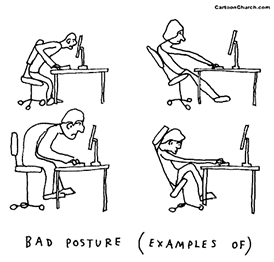
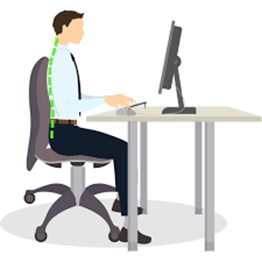
- Head/neck in line with your shoulder, stacked straight on top of your hips. Avoid craning neck forward, leaning torso forward, or sitting with hips all wonky.
- Shoulders should be rolled back and down, not hiked up to our ears (This tends to happen when stressed or focused intently)
- Elbows bent 90 degrees, and you shouldn't have to reach far forward to reach your keyboard.
- Hips all the way back in the chair; sitting on the edge of your chair could lead to excessive arch in your lumbar spine, and other variations encourage slouching.
- Hips and knees be bent to 90 degrees
- Feet flat on floor
**Right angles are the key with all of this! It helps keep your body in a neutral position to avoid strain and tightness of your muscles**
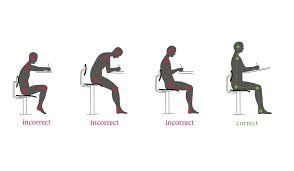
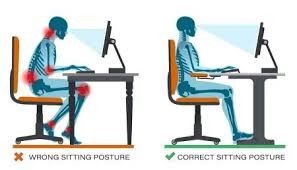
Desk Set-Up
How does posture get applied to our workstation? Ask yourself the following questions:
- Do you have a home office? Or have you been making do with your kitchen table, couch, recliner, or working from bed? (No judgement! We are not all lucky to have a designated office space in our homes)
- What type of chair have you been utilizing?
- What is your work surface?
- Are you using a laptop? Desktop? External keyboard and mouse?
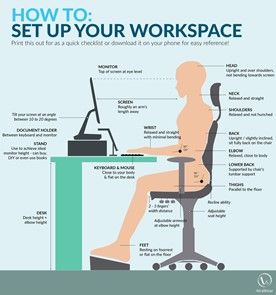
If you do have a designated office space in your home, that is great! Some things to keep in mind with your desk set-up is as follows:
Chair: Ideally,
you are using an office chair that has built-in lumbar support.
- However, you may be using a kitchen chair now that you are working from home. If this is the case for you, see the lumbar supports and cushions linked at the end that will make your sitting arrangement more comfortable.
- Alternatively, you can simply fold a jacket, towel, or blanket and place it in the small of your back for support and a reminder to sit up straight.
- Your chair should be adjusted to a height that easily makes "ideal posture" possible.
- It is also important to note that there should be some space between the back of your knee and the edge of the chair to allow for good circulation. On the topic of circulation, avoid crossing your legs for long durations to allow for circulation and to also prevent hip and back pain!
Desk/work surface:
In a perfect world, we have desks that
are the perfect height for our computer keyboard to be easily reached, and our
computer screen to be right in front of our eyes.
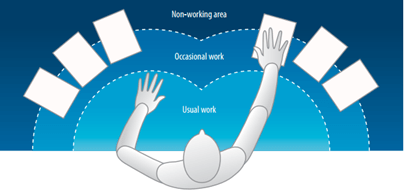
- Desk should be at about elbow height/slightly lower to decrease forearm & upper body strain, and to encourage ideal body alignment.
- Your keyboard should be placed where it is easy to type without having to extend your arms to reach it.
- Computer monitors or laptop screens should be at eye-level or slightly lower. A higher screen forces you to extend your neck, and over time can lead to neck strain.
- Keep frequently used items (phone, pen, paper, post-it notes, stapler, & other office supplies) close to avoid frequent reaching.

Here are some helpful
additions to your workspace that can make all of this possible:
- Amazon - Lumber Support Cushion
- Staples - Mesh Back Support
- Amazon - Cushion Pad
- Staples - Monitor Stand
- Staples - Laptop Stand
- Amazon - Ergonomic Mouse
- Office Depot - Ergonomic Keyboard
About to Author:

